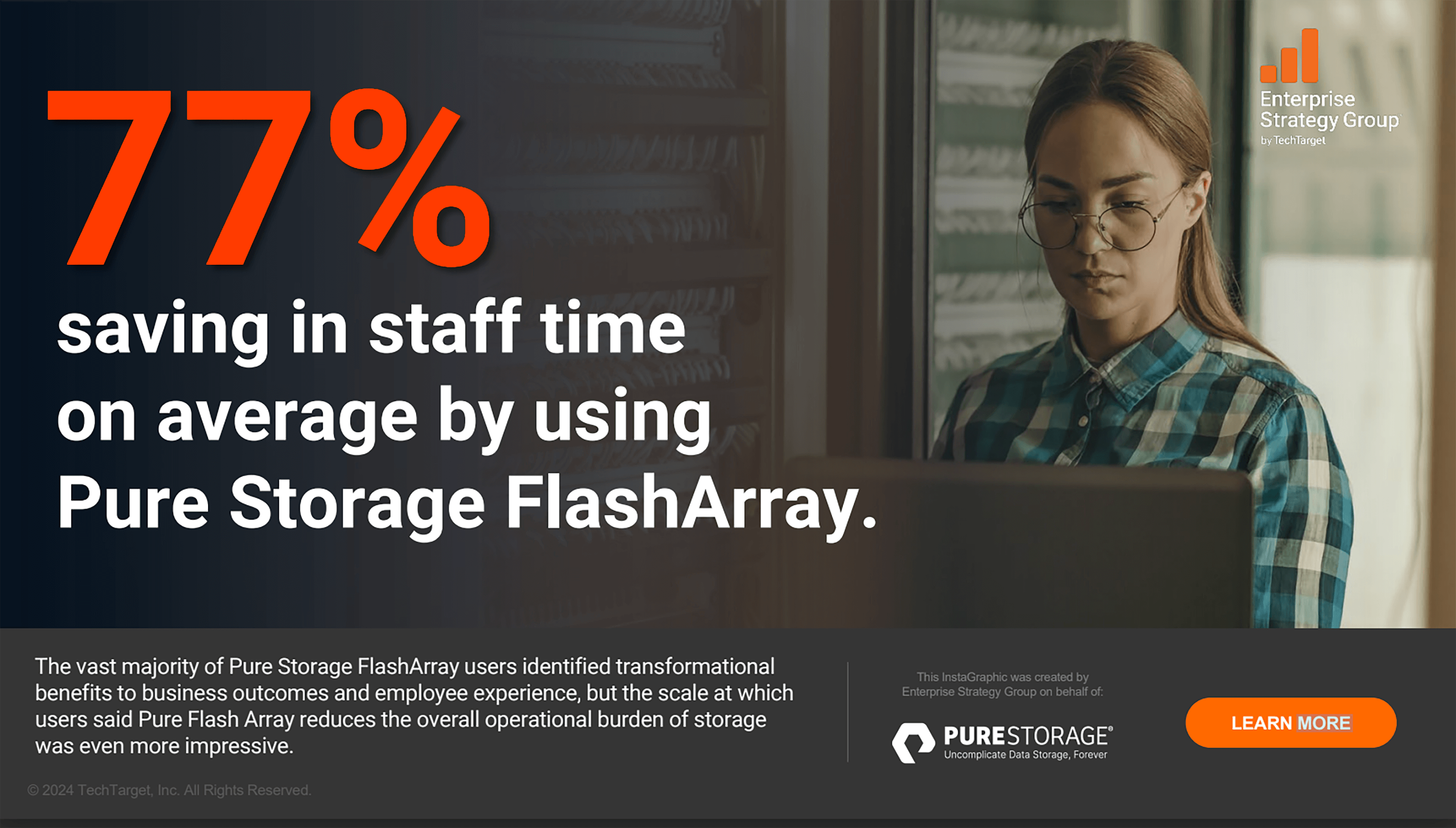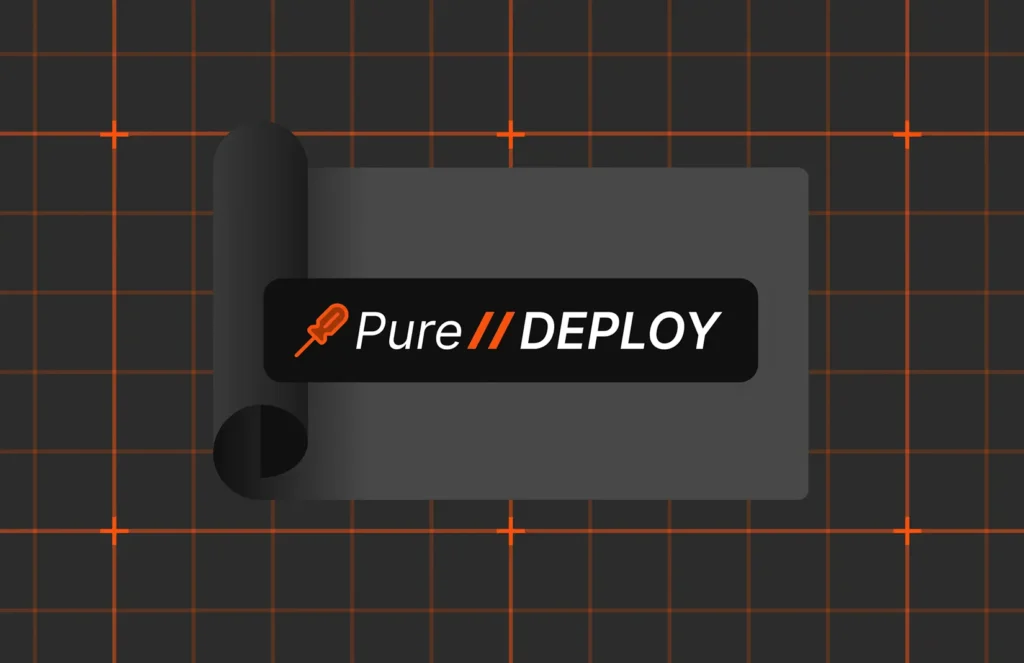
The cascading effects of transforming into a digital-first world have stress-tested IT infrastructures—and piled on the strapped IT teams who run them. And they’ve delivered.
When asked for agility, availability, and remote support, many IT teams are navigating the limits of overly complex legacy IT to keep us online, keep us connected, and keep operations rolling. Bu that degree of complexity isn’t sustainable. It can end up in burnout and bottlenecks. What can we do to give these teams the support they deserve?
In a word: simplicity.

When Chaos Multiplies Complexity
Even before the pandemic, organizations faced major challenges with their existing IT solutions. You likely know these well:
- Infrastructure complexity—with incompatible resources, siloed data, and lack of visibility that leads to waste and overspend
- Data inaccessibility—a leading complaint that drains data of its potential across an organization
- Legacy management—where entire roles have been dedicated to administrative and technical tasks that should be simple, automated, or eliminated altogether
- Performance issues—leading to situations where lags and outages that have serious consequences such as poor customer experience and missed SLAs
Zeroing in on data storage, in particular, you can see how complexity and limited access to data create real barriers to innovation. Digital transformation is topping everyone’s lists for 2023. Traditional data storage is one bottleneck that organizations can’t afford if they want to stay ahead.
Learn How Businesses Bounced Back After the Pandemic!
Where Companies See Room to Improve
We interviewed 500 IT decision-makers at companies ranging from small to enterprise. In their responses, they discussed the strategies they took to navigate challenges. Many reflected on the role that simplicity plays in their success and failures.
Organizations know that IT agility isn’t just a “nice to have” anymore. It’s a non-negotiable for digital business and competitive edge. Yet despite this, many IT departments are still living with IT complexity.
So what does “simple” storage look like to IT practitioners?
- Smaller organizations are most likely to think of “simple” data storage and IT operations as “quick to install”—which makes sense for lean teams who need systems up and running fast.
- Medium-sized organizations described simple as “easy to plan and upgrade.”
- Enterprise organizations described simple storage as “easy to monitor and get predictive support.” The more data you’re wrangling, the more difficult that gets.
All told, respondents felt simple storage should include the following.
A Major (but Less Obvious) Digital Transformation Hurdle
What do companies say is holding them back from IT upgrades that could lead to innovation and transformation? When asked what obstacles were preventing them from effectively executing digital transformation, 28% of respondents cited legacy technology that slows and complicates new integrations. It’s another cry for simplicity from the ranks of those who need it most. But eliminating that barrier won’t just benefit stressed-out IT teams. It can benefit the entire organization.
It should come as no surprise, then, that a majority of respondents are already using or are eyeing one trend that can seamlessly address all of the above: infrastructure as a service (IaaS) and software as a service (SaaS).
Is as a Service the Answer?
Storage as a service (STaaS) is one IaaS model that’s offering more simplicity. Those that have embraced STaaS are seeing immediate relief for stressed-out teams—and it can also boost happiness and morale.
- 50% of respondents said their biggest IT strategy change for 2023 is purchasing software as a service (SaaS) over buying licensed software
- 35% said they planned to transition to buying IT equipment via utility consumption models in 2023
- 47% said they expect to reduce their reliance on on-premises infrastructure by moving to service-provider or cloud solutions
This is a big shift in strategy that will directly benefit stressed-out IT teams responsible for product selection and maintaining on-premises equipment. It’s scaling capabilities without scaling work for teams who have enough on their plates.
It also may help address those old challenges with forecasting and legacy management. “Plugging into” as-a-service solutions can help avoid headaches with training, deployment, and ramp-up periods. This may be music to your IT team’s ears—but your business and bottom line will benefit, too. As-a-service models allow you to get the most modern offerings available without expensive, inconvenient hardware upgrades. Couple this with business-driven SLAs and top-notch customer experience, and it’s looking like modern infrastructures are those IT will love, not just “live with.”
The last few years shined a light on bottlenecks that have overstressed IT teams for decades and put businesses at risk. Now is the time to replace those bottlenecks with breakthroughs—and have happier, more productive IT teams. Success will hinge on the IT solutions that can address every legacy challenge and complexity with built-in simplicity. And, IT shouldn’t have to settle for less.







